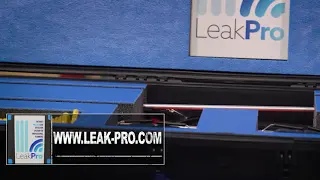Traditional, “old-school” plumbers might hold fittings up, eyeball the lengths, and hope for the best—but modern plumbing calls for a more precise method. By using published fitting takeoff dimensions from manufacturers, you’ll know exactly how much pipe to subtract for each hub or bend, ensuring consistent results and saving time on rework.
This post walks you through a real-world example—measuring 4-inch fittings like combination wyes and long-sweep quarter bends—and shows you how to do the math without guesswork. If you’re ready to eliminate trial and error in your plumbing cuts, keep reading.
Why Fitting Takeoff Matters
- Prevents Guessing: Instead of holding pipes in place, you use data from the fitting’s “makeup” depth to subtract the correct lengths.
- Saves Time: Less cutting, less recutting, and fewer do-overs lead to smoother installations.
- Professional Results: Precisely cut pipes fit neatly into hubs, improving flow, reducing stress on joints, and making your finished work look more organized.
Using Manufacturer Dimensions
Every fitting has specific measurements—often listed in a table or “cut sheet.” For example, Charlotte Pipe provides data for PVC and ABS fittings, showing how far the hub extends and how large the sweep radius is. Look for columns labeled “A,” “B,” or “C” dimension. Each dimension corresponds to a portion of the fitting, such as the distance from the center to the hub end.
Example with 4-Inch PVC
In the video, the following data is used:
- Combination wye (4-inch):
- B dimension (run to center) = 8 1/8 inches
- C dimension (branch to center) = 10 inches
- A dimension (other side of the wye) = 10 inches
- Long-sweep quarter bend (4-inch):
- From center to hub makeup = 4 15/16 inches (noted as 4 and 15/16)
When two fittings connect—say a 4-inch combo wye and a 4-inch long-sweep 90—you subtract the “makeup” lengths of both fittings from the overall center-to-center distance. The leftover figure is the actual piece of pipe to cut.
Step-by-Step Calculation
Imagine you have a combination wye, then 21 9/16 inches away, you plan to turn up with a long-sweep 90. You need to figure out how long the pipe between these two fittings should be.
- Measure Center-to-Center
Assume the distance between the combo’s center and the 90’s center is 21 9/16 inches. - Identify Fitting Makeup
- Combo wye: 10 inches to its hub center on the branch side.
- Long-sweep 90: 4 15/16 inches from center to hub.
- Sum the Makeup
Add 10 inches (for the combo side) and 4 15/16 inches (for the 90) = 14 15/16 inches total. - Subtract Makeup from Center-to-Center
From 21 9/16 inches, subtract 14 15/16 inches. This leaves 6 5/8 inches. That’s your cut piece.- If the fractions get tricky, convert them to sixteenths or eighths, do the arithmetic carefully, then reduce them back.
- Double-Check
A good practice is to re-add the two makeup lengths (10 and 4 15/16) plus your newly calculated piece. If it sums back to the original 21 9/16, you know the math is correct.
Tips for Accurate Math
- Convert to a Common Fraction: Work in sixteenths if that helps avoid confusion.
- Borrow an Inch When Needed: If you need to subtract a fraction like 15/16 from 9/16, convert 9/16 to 25/16 by borrowing 1 inch (16/16).
- Check Twice: Measure your final piece one more time to confirm. Plumbing is a measure-twice, cut-once trade.
Sponsored by Leak Pro
This video (and post) is sponsored by Leak Pro, a company specializing in leak detection equipment and training for plumbers. With Leak Pro’s advanced acoustic tools, you can:
- Quickly pinpoint hidden leaks under slabs or in yard lines
- Diagnose tricky water-line issues without destructive guesswork
- Grow your revenue by adding leak detection services
If you’re looking to elevate your plumbing career or expand your company’s services, check out Leak-Pro.com to learn how the right training and technology can help you become the go-to expert in leak detection.
Practical Advice
- Use the Manufacturer’s Table: Each brand—like Charlotte or similar—provides data for every fitting size. Keep these charts in your truck or saved on your phone for quick reference.
- Stay Organized: Label each piece of pipe or note it in a sketch. When you’re cutting multiple segments for a large system, it’s easy to mix them up if they’re not clearly marked.
- Remember Variation: Occasionally, a manufacturer’s tolerance might vary slightly, or you might have a different brand in the field. Double-check critical angles or dimensions if your layout is especially tight.
Conclusion
Mastering fitting takeoff calculations is more than just a neat trick; it ensures accuracy, reduces wasted materials, and conveys a professional, organized image. Rather than “eyeballing” cuts and hoping everything lines up, you can rely on solid math and manufacturer specs to guide every measurement. Whether you’re dealing with a simple 90 or a multi-faceted series of tees and wyes, the principle remains the same: subtract your fitting makeup from the overall distance to find the exact pipe length.
Combine these math skills with high-quality leak detection from Leak Pro, and you’ll not only ensure precise installations but also position yourself to offer premium, full-spectrum services to clients who demand the best. With a bit of practice, you can make perfect cuts on every job—no guesswork required.




